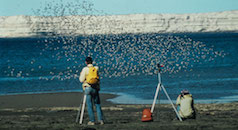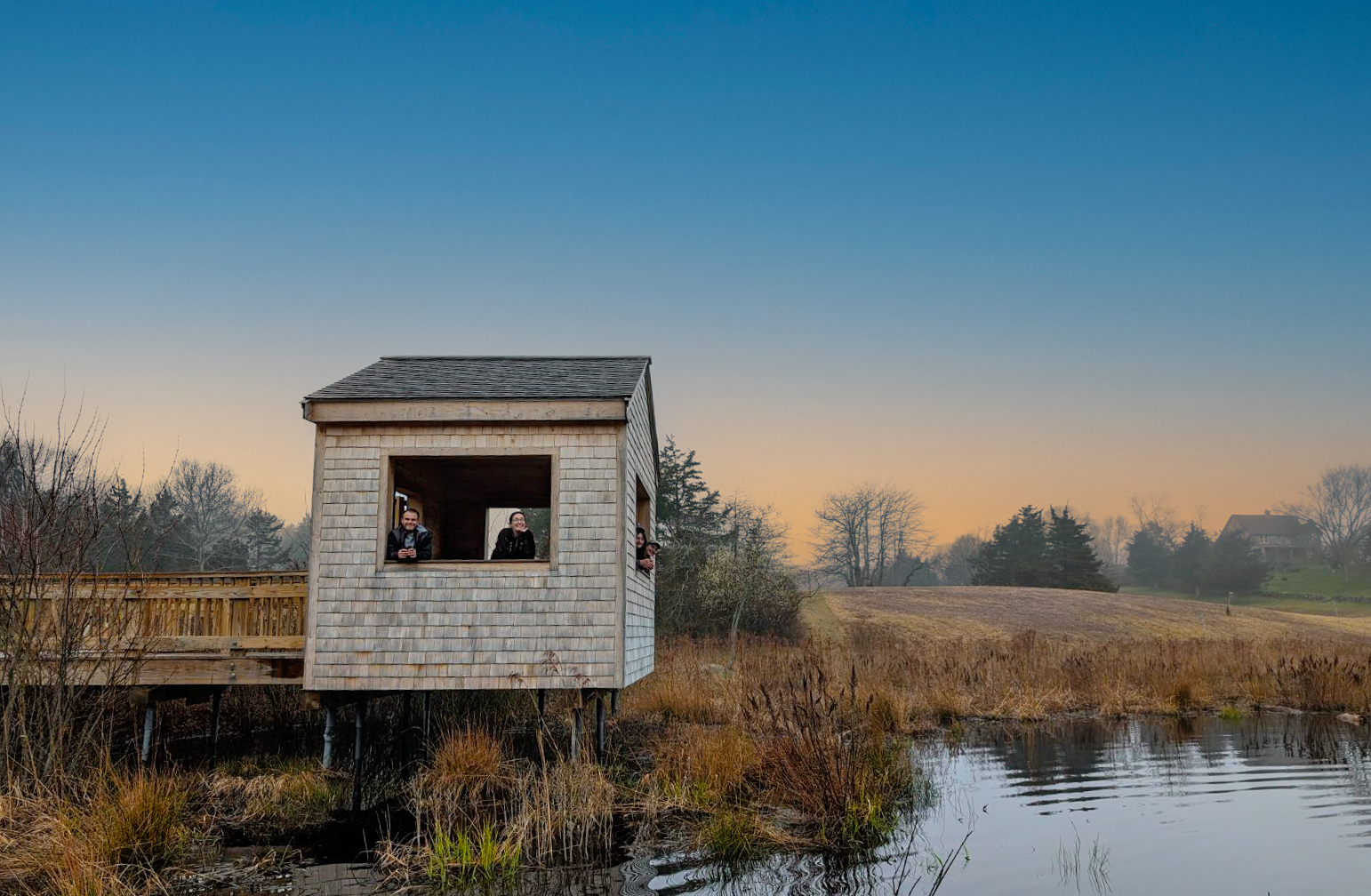On September 8, Manomet’s banding lab recaptured a Common Yellow-throat that is at least seven years old, long outlasting the average one to two year life expectancy of the species.
“Although he has been caught by our lab 22 times prior, this was the first time we have ever caught him in the fall, which may tell us that he started his migration later than usual,” said Banding Director Trevor Lloyd-Evans.
 Due to a long stretch of unfavorable winds, the banding lab has seen a severe lack of neotropical migrants so far this season. Over half of the lab’s 650 new captures have been resident Gray Catbirds.
Due to a long stretch of unfavorable winds, the banding lab has seen a severe lack of neotropical migrants so far this season. Over half of the lab’s 650 new captures have been resident Gray Catbirds.
Despite the low number of migrants, the lab has welcomed some exciting species including six Mourning Warblers, two Sharp-shinned Hawks, an Eastern Screech Owl, a Blackburnian Warbler, a Hooded Warbler and a Worm-eating Warbler.
 The banders also captured an Intergrade Yellow-shafted/Red-shafted Flicker. Yellow-shafted Flickers are native to the Northeast, and Red-shafted Flickers are usually found west of the Rocky Mountains. The Intergrade looks like a hybrid of the two because as many as three of its outer primary feathers show red coloration. The lab is helping the Royal Alberta Museum in Edmonton, Alberta, with their ongoing study to determine whether the red feathers are of a genetic or dietary origin.
The banders also captured an Intergrade Yellow-shafted/Red-shafted Flicker. Yellow-shafted Flickers are native to the Northeast, and Red-shafted Flickers are usually found west of the Rocky Mountains. The Intergrade looks like a hybrid of the two because as many as three of its outer primary feathers show red coloration. The lab is helping the Royal Alberta Museum in Edmonton, Alberta, with their ongoing study to determine whether the red feathers are of a genetic or dietary origin.
This fall banding season officially marks the 45th year of standardized landbird migration research at Manomet.
Manomet’s 50 mist nets have been open on the same dates and in the same locations every fall and spring since 1970, establishing a remarkably standardized dataset that is able to provide comparisons of range expansions and contractions, yearly variation of migration, and long-term population change.
 “Due to the consistency of our data, we are able to depict long-term trends that are associated with climate change,” said Lloyd-Evans. “Our data shows that as temperatures are rising, some species are altering the timing of their migration and expanding their ranges, but some are not.”
“Due to the consistency of our data, we are able to depict long-term trends that are associated with climate change,” said Lloyd-Evans. “Our data shows that as temperatures are rising, some species are altering the timing of their migration and expanding their ranges, but some are not.”
The program is celebrating the 45-year milestone with a set of commemorative posters featuring four landbird illustrations by former Manomet banding intern Sasha Munters. The posters highlight four distinct changes in population dynamics found in Manomet’s dataset that are associated with global climate change.
This season’s banding staff consists of Grace Alloy-Relihan, Ian Davies, Lauren diBiccari and Ben Lagasse.
Ian grew up around the banding lab. He attributes his loves of birds to his first experiences banding with Trevor 10 years ago. This is Ian’s fourth season as a bander and he has also spent three summers researching in the arctic for the Arctic Shorebird Reserve Network.
 Grace was a bander at Manomet during the last three seasons. Prior to becoming a Manomet bander, she was an intern at the Raptor Trust in Millington, New Jersey, where she helped care for orphaned, sick and injured birds. For the past three years, she has co-taught an ornithology class at Wheaton College. Grace currently manages the banding lab’s Twitter account.
Grace was a bander at Manomet during the last three seasons. Prior to becoming a Manomet bander, she was an intern at the Raptor Trust in Millington, New Jersey, where she helped care for orphaned, sick and injured birds. For the past three years, she has co-taught an ornithology class at Wheaton College. Grace currently manages the banding lab’s Twitter account.
Lauren, who was a Manomet bander this spring, also rejoins the banding team this season. She graduated from Dartmouth College and has worked as an avian rehabilitation intern at the Vermont Institute of Natural Science in Quechee, Vermont, and at the Raptor Education Group, Inc. in Antigo, Wisconsin.
Ben joins Manomet for the first time this season. He graduated from UMass-Amherst this spring and spent the summer conducting field research on Hudsonian Godwit for a Cornell graduate student in Alaska.
For daily updates and photos from our banding team, follow @ManometBanding on Twitter.
The bird photos featured in this article were taken by Manomet Bander Ian Davies. To see more of Ian’s photography, visit his Flickr account.





 Back to all
Back to all